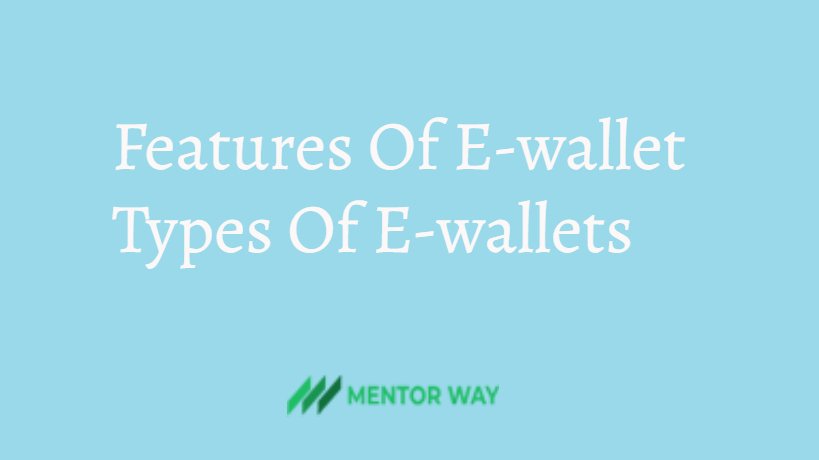Features Of E-wallet| Types Of E-wallets

Following are the features of an Electronic Wallet:-
- Consumers need to enter their information just once in the E-wallet, instead of having to enter their information at every site with which they want to do business.
- Electronic Wallets provide convenience for the consumer and make online shopping more efficient.
- When consumers select items to purchase, they can then click their Electronic Wallet to order the items quickly.
- Some Electronic Wallets can also hold e-cash from various providers and provide at an e-commerce sit’s checkout page.
- Using digital wallets merchants can lower their transaction opportunities for their products
- They store personal and financial information such as credit, passwords. PINs and mush more.
- They also eliminate the reentering of personal information on the forms, resulting in higher speed and efficiency for online shoppers.
- Financial intermediaries benefit from the use of digital wallets because they receive processing fee for each transaction.
- They support serial types of credit cards, digital cash, paper and digital checks, and purchase orders.
- They offer a secure, convenient and portable tool for online shopping.
- Electronic Wallets make shopping more efficient. When customers select items to purchase, they can click their Electronic Wallet to order the items quickly.
Electronic Wallets are commercially available for pocket, palm-sized, handheld, and desktop PCs. Most sites do not rely on wallets because their implementation forces the user to download software and to establish a relatively complicated configuration.
Buyer enters the purchase details and their ID and sends it over Internet to the e-business web-server. Buyer’s ID information is sent to the Electronic Wallet.
The Electronic Wallet verifies the buyer’s ID and sends the payment information to the web server. Thus the order is fulfilled and the order is placed in the shopping cart.
Some major Electronic Wallet providers are Microsoft. NET passport, Yahoo, Cybercash, AOL and Google.
In the future, Electronic Wallet owners could track the purchases and maintain receipt for those purchases. The Electronic Wallets can also suggest when the customer might find a lower price on an item that he purchases regularly.
Types of Electronic Wallets based on the location of storage:-
E-Wallets fall in two categories based on where they store the consumer’s information:
1.Server-Sit Electronic Wallet:-
A server-side Electronic Wallet stores a customer’s information on a remote server belonging to a particular merchant or wallet publisher.
For example, if you enter your information on a site such as Amazon.com and choose to store that information so that you do not have to enter it when you visit the site next time. Amazon.com stores your information in a server-side Electronic Wallet.
The main weakness of server-side Electronic Wallet is that a security breach could reveal the personal information of thousands of users including credit card numbers to unauthorized parties.
Thus, server-side Electronic Wallet should employ strong security measures to minimize the possibility of unauthorized disclosure.
2.Client-Side Electronic Wallet:-
A Client –Side E-Wallet stores a consumer’s information on his own computer. Many of the early Electronic Wallets were client-side E-Wallets that required users to download the wallet software.
This need to download the software onto every computer in order to make purchases is the major disadvantage of the client-side E-Wallets.
Another disadvantage of client-side wallets is that they are not portable.
For example, a client side wallet is not available when a purchase is made from a computer other than the computer on which the wallet resides.
The sensitive information such as credit card numbers is stored on the user’s computer instead of wallet provider’s central server. This removes the risk that an attack on a client-side E-Wallet vendor’s sever can produce.



